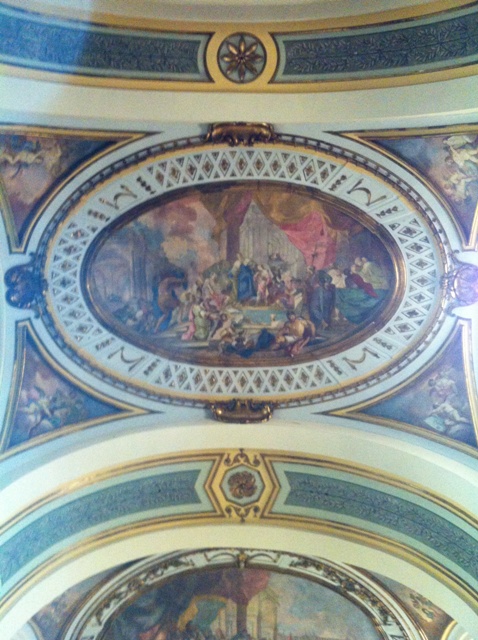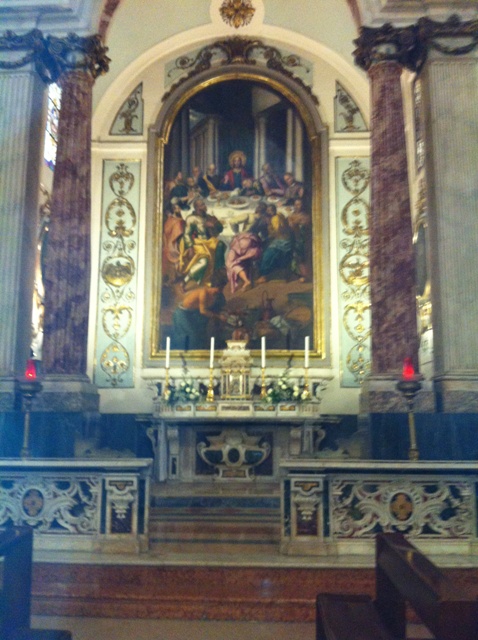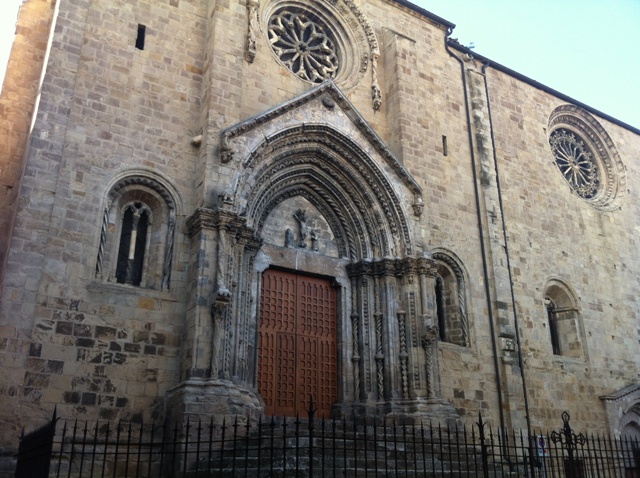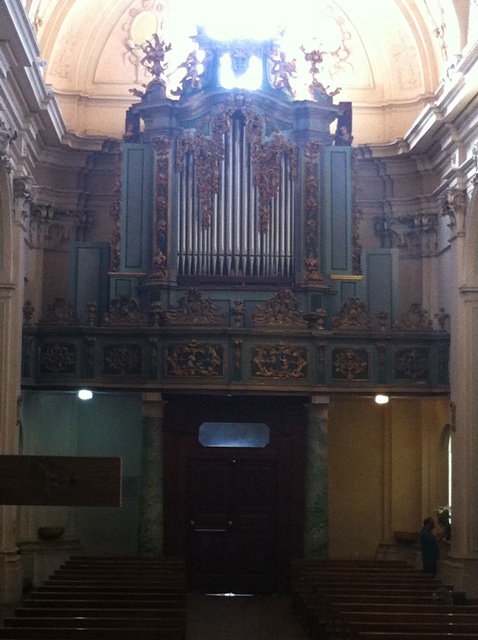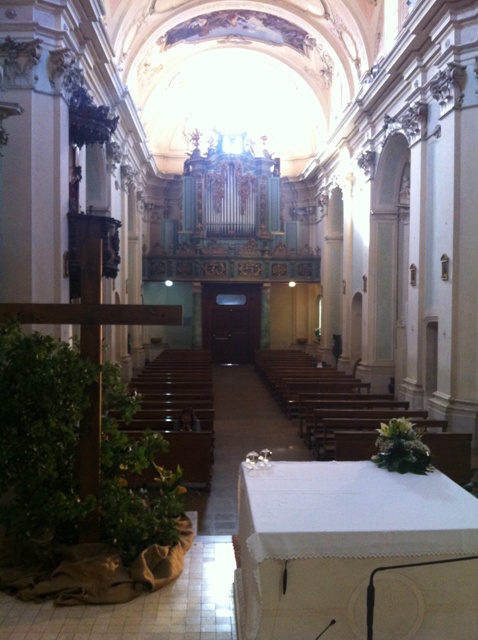
Properties for sale
| |
Abruzzo, Central Italy
Official Council Site
Google Tour.
At Lanciano Free Internet !
275 meters above sea level.
| Size; 66 km▓ Population of 36,304 15 minutes drive to the beach Distance to next town; 45 minutes drive to Pescara 25 minutes drive to Lake Bomba 60 minutes drive to Ski resorts |

Lanciano is a small and beautiful town of ancient origins, with about 40.000 inhabitants, that is situated in the Frentano Subappeninnes. It preserves the remnants of the ancient medieval walls. The flourishing trade sectors are those of the agricultural products and of the textile, chemical, food and shoe industries. Sheep-breeding and agriculture have developed a lot too.
| The ancient Roman name of Lanciano was Anxanum, a city of the Frentani Italic tribe. The city is said to have been founded in 1181 BC by Solimus, a Trojan refugee arrived in Italy along with Aeneas. Legends aside, archaeological findings have shown that the area was settled from the 5th millennium BC. Under the Frentani it was probably under the influence of Greater Greece. After the end of the Samnite Wars, which saw the Frentani allied with the Romans, Lancianum obtained the status of municipium. It was probably a flourishing commercial site, across an ancient and important trade route connecting Pescara to Apulia. According to tradition, Lanciano is also the birthplace of Longinus the Roman centurion who thrust his spear into Jesus' side during the Crucifixion: Lanciano in Italian means "of the Spear"
|
About Lanciano
|
Property in Lanciano Abruzzo
|
Lanciano, Abruzzo, Central Italy in Abruzzo
|
Lanciano is situated on the hills of Sangro Valley and it has very old origins: the archaeological finds present here date back even to the Neolithic period and the latest excavations have dug out the remnants of the ancient Anxanum, a big twelfth century B.C. living structure, which is among the oldest ones in Abruzzo. | Anxanum is also mentioned by Julius Caesar as a Roman station. From 1154 on, the town was called Lanzano, and the suburbs of Lancianovecchia, Sacca sul Colle della Seiva, Civitanova and Borgo sul Colle Pietroso took shape. Lanciano reached its maximum splendour between the twelfth and the fifteenth centuries, thanks to the development of the Fairs, the Roman ?Nundinae?, which were held in the first months of the year on the Selva Hill, where the Temple dedicated to Apollo stood. After the medieval period, these fairs had a big development, that achieved its highest point in the fifteenth century.
| 
|
|
| 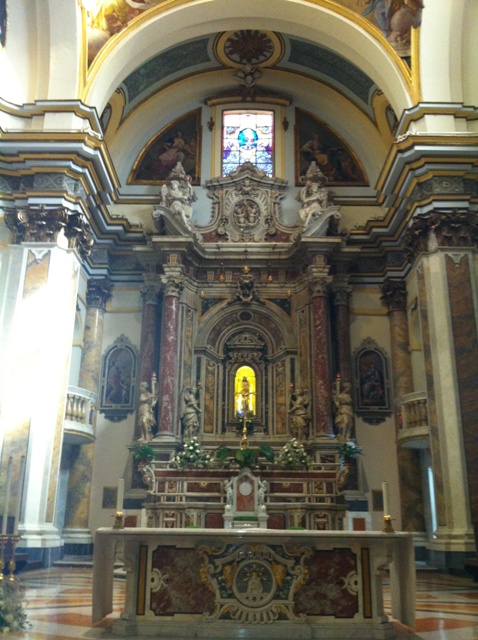
|
Abruzzo Central Italy, Lanciano
|
Abruzzo , centro Italia
|
Centro Italia Abruzzo
|
|
Merchants from all over the world reached the fairs and there were very frequent exchanges with Venice and Ragusa. Unfortunately, the first signs of crisis began exactly in the period of maximum development of the town, due to the fights between French and Spaniards, that undermined the growth of the town itself. This is the reason why Ferdinand of Aragon, in 1515, stated with an edict that the merchants of any provenance and of any religion had to be protected and be ?safe and secure? for all the period of the fairs.
|
|
Lanciano, Abruzzo, Central Italy
|
Costa Dei Trabocchi in Abruzzo
|
Lanciano, Abruzzo, Central Italy in Abruzzo
|
|
In fact, during the fairs, people elected the Mastrogiurato (a juryman), who had to make everyone respect the Fair Peace. In the seventeenth century, King Philip abolished this privilege for the merchants and caused a gradual decay of the town. In the seventeenth century, Lanciano became a feud of Duke Alessandro Pallavicino and later of Marquis d-Avalos del Vasto.
In the 20th century, the inhabited area became bigger and Lanciano participated in the Second World War.
|
Lanciano, Abruzzo, Central Italy
|
Costa Dei Trabocchi in Abruzzo
|
Lanciano, Abruzzo, Central Italy in Abruzzo
|
|
Today Lanciano is a well known fair centre, which is recognized on a national and international scale. Lanciano is also the town of the first Eucharistic Miracle recognized by the Church, that took place in the seventh century. | The airport that you can keep as a reference is Abruzzo Airport, situated 39 km away from Pescara, with flights from and to Turin, Milan and Rome and links to the most important European capitals. Of course, once you have arrived in Abruzzo, we advice you to reach Lanciano by car, since you can rent one at the airport. The motorway for you to keep as a reference is the A14 Bologna-Bari, that leads you directly to Lanciano (exit sign San Vito-Lanciano).
| 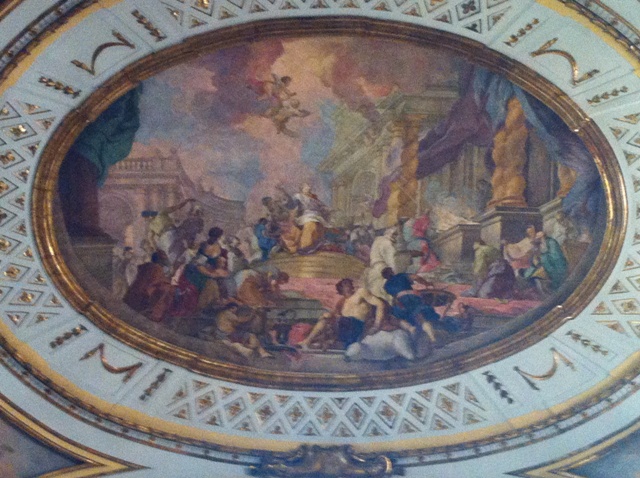
Lanciano, Abruzzo, Central Italy
|
Costa Dei Trabocchi in Abruzzo
|
Lanciano, Abruzzo, Central Italy in Abruzzo
|
Churches |
Basilica della Madonna del Ponte
The main church in Lanciano is the one dedicated to the madonna del ponte (of the bridge) - and the name comes from a simple yet bizarre fact: this church is built on top of the arches of the Diocletian bridge - because there, it is said, someone had found a miraculous statue of the Virgin Mary. It started as a small chapel, it ended up throughout the centuries as the biggest church in town. It is now in neoclassic style. It is possible to visit the church and if you-re lucky its subterranean part, from there you will be able to see the famous bridge upon which it is built.
It is considered one of the most important monuments of Abruzzo. Built in 1227 following the principles of Burgundy - Cistercian in 1540 was extensively remodeled in the style of baroque (with the addition of two aisles and stucco work and decorations). In 1968 a restoration brought it back to the original structure. Are artistically significant fašade, the main portal (added in 1317 ) and the small side door. The interior has been restored to the simplicity of the lines of Gothic Burgundy, with three naves divided by columns and surmounted by agile vaults.
This monument, dedicated to the people who gave their life for freedom, is located just off piazza Plebiscito. It is in particular dedicated to the local partisans who lost their lives on 5th and 6th of October 1943, during the Lanciano revolt. The statue at the centre of the monument symbolizes a dying young man, comforted in his last minutes of life, by his mother.
The Church has San Francesco (Saint Francis) dates back to 1258 and it is controversially famous for what is called "Eucharistic Miracle", which occurred for the first time in the Church of San Legonziano, which was previously in this location. The miracle took place in the 8th century: during a holy mass the host was changed into live flesh and the wine was changed into 5 globules of live blood you can now seen them displayed in the main altar you can see the relics of the Eucharistic Miracle
One of the most beautiful buildings in Lanciano, just off Piazza Plebiscito, is the town hall - a large neo-classical building dating back to 1867. The attached tower is the medieval tower of Cassero. |
Car rentals
Trains
Hotels
Bars
Restaurants.
Theatres.
Rentalcars.com
Easyterra
Arguscarhire.com
If you prefer travelling by train, you can reach San Vito-Lanciano station thanks to the Milano-Lecce line.
Tripadvisor.it
InItalia.it
Bar micolucci
Bar La colomba
Bar micro
Bar La gardenia
Bar piccadilly
Bar belvedere
Bar caffe percaso
Hotel castello
Palazzo Franchi bardavi
Restorante taverna Bed & breakfast
Hotel Restorante La furnacelle
Restorante Villa Elena
Restorante pizzeria La Torre
Theatre Fenaroli


